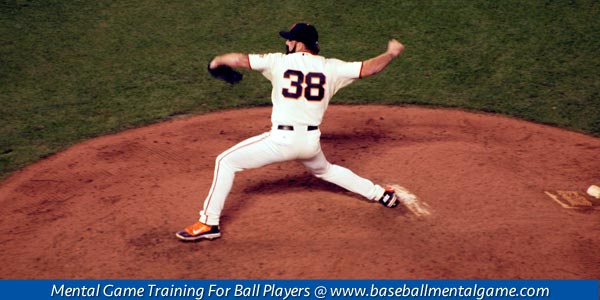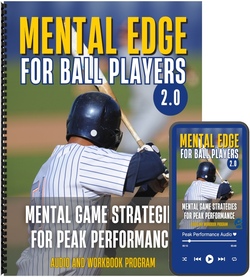What Does Your At-Bat Routine Look Like?
If you have trouble focusing or getting settled when you step into the batter’s box, then you would benefit from learning an at-bat routine. I have found that a consistent mental and physical routine can be a player’s greatest asset to help focus the mind, instill confidence, and deflect distractions.
Three At-Bat Routine Objectives
First, instill confidence and help you focus on success – or what you want to accomplish.
Second, focus on the task, not the results of your at-bat. The last is to help you trust in your skills during execution and not over-analyze or over-think your swing. A batting routine locks your focus into performance cues, such as seeing the ball well, so you can be task–focused for every at bat.
A routine also should be simple and tailored to a player’s preferences, but still achieve these three primary objectives. You don’t want a batting routine that is too complex. You don’t want to focus on too many details during your routine. You want to simplify your batting routine so it’s easy to practice and put into games.
Here, I outline five important ingredients of a good preshot routine:
Mental Game Keys of a Positive At-Bat Routine:
1. Regroup and Get Control: Outside of the box, release the last pitch, it’s over, let it go. Take a slow, deep breath as you prepare to step into the batter’s box. When you step into the box, this says your mind is clear and you are focused on the next pitch.
2. Have a Plan: Get signal from coach. Make sure you have a plan and commit to it before your step in such as “see the ball and react.” Do not proceed unless you are committed to a plan.
3. See Your Plan: Rehearse your plan. You have a few options here. See it, “feel” it, hear the ball contacting the bat, or use a combination of all! Positive image here is necessary to feel confident and commit to plan.
4. Focus on the Ball: Narrow your focus on the release point of pitcher as you settle into the box. Here, you are setting the stage to see it and react.
5. React, Just do it: React to the ball freely. What’s important is to be free, natural, and loose. Don’t “guide” the swing—trust your mechanics. You may choose a cue word or phrase to help you “let it go,” such as “hit it hard.”
If your mind wanders for any reason (including negative results) stop and refocus your mental game. For example, if your mind wanders to the last pitch or worry about not getting a hit, stop, step out of the box, and restart your mental routine.
Related Sports Psychology Articles
- Mental Keys to Higher Confidence for Ball Players
- Athletes Who Are Self-Critical After Games
- Three Mental Keys to Focusing on the Diamond
*Subscribe to The Sports Psychology Podcast on iTunes
*Subscribe to The Sports Psychology Podcast on Spotify
Get The Mental Edge for Baseball and Softball
If you have trouble taking your practice game to competition and under perform in games, your mental game might be the culprit! Baseball and softball players contact me everyday wanting to know why they become scared, anxious, afraid to make mistakes, and lack trust in their skills during games…
You might have a ton of physical talent and perform great in practice, but if you can’t get the job done when it counts, something is missing and the problem is an inferior mental game–not talent or motivation.
We’ve spent the last six months developing a program to teach you how to improve your mental game in 8 easy-to-apply lessons–the same TOP lessons that I teach to baseball and softball players everyday in my one-on-one mental coaching program!



I loved your tip on reacting to the ball freely and natural when you’re at-bat. My son is wanting to improve his batting his skills and he was wondering where he should be swinging at when he’s about to hit the ball. I’ll let him know that he should react to it freely when the ball is coming at him.